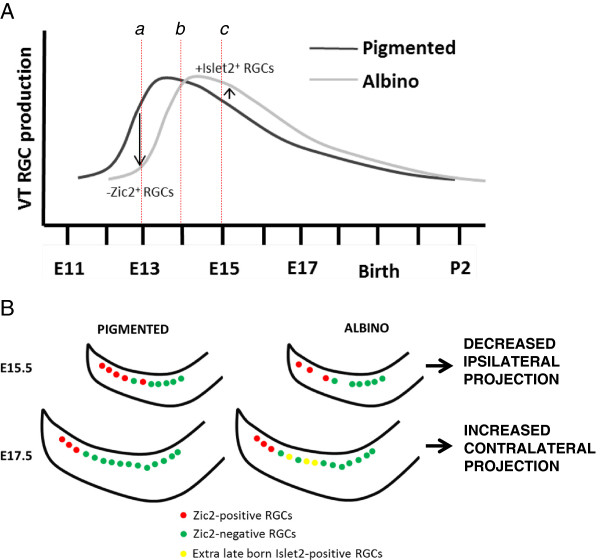Figure 8.

A delay in ventrotemporal retinal ganglion cell production during embryogenesis alters the proportion of ipsilateral and contralateral retinal ganglion cells. (A) Scheme of the wave of ventrotemporal (VT) retinal ganglion cell (RGC) production in the albino and pigmented retina and its link to RGC projection subtype specification. (a) At embryonic day (E)13, fewer VT RGCs, and specifically Zic2+ RGCs, are produced in the albino retina compared with pigmented retina. (b) At E14, a similar number of VT RGCs, both those that are Zic2+ and those that are Zic2−, are produced in pigmented and albino retinae. (c) At E15, more RGCs, specifically Zic2− RGCs, are produced in the albino retina compared with the pigmented retina. The additional late-born Zic2− RGCs express contralateral markers, reflected in an increased number of Islet2+ RGCs in the albino VT retina compared with the pigmented VT retina. P, postnatal day. (B) Scheme depicting differences in Zic2+ and Islet1/2+ cell numbers in the albino retina resulting from the delay in VT RGC production described in (A). The delay alters the number of cells expressing Zic2 (red) at earlier ages (E15.5) to produce fewer ipsilateral RGCs and the number of cells expressing Islet2 at later ages (E17.5) to produce an extra population of contralaterally projecting RGCs (yellow). The number of overall VT RGCs in the albino mouse equalizes at E17.5.
